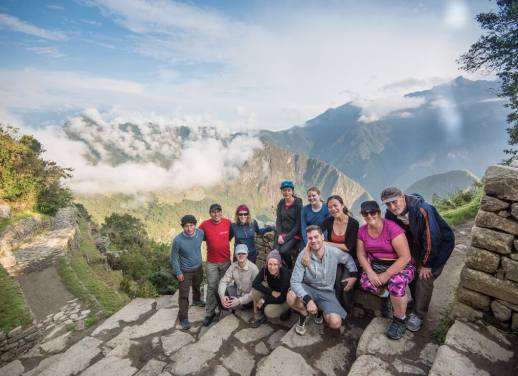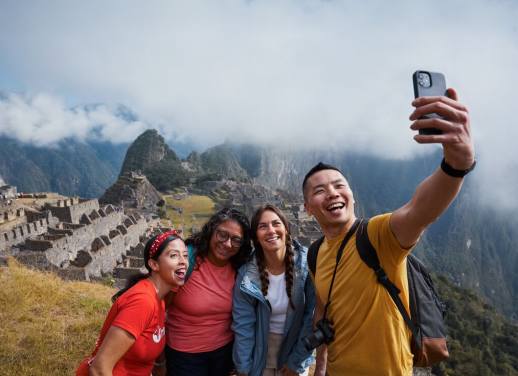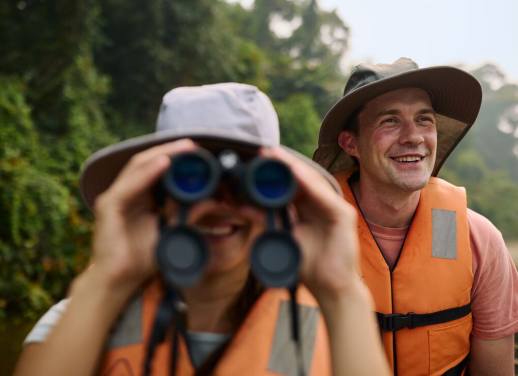You probably know that Machu Picchu is a 15th-century Inca citadel and one of the New Seven Wonders of the World, but here we share some lesser-known secrets hidden behind its dramatic dry-stone walls.
Sitting on a 2430-metre-tall ridge in the heart of the Peruvian Andes, Machu Picchu is the quintessential image of Peru. Like the clouds that swathe the ruins in the early morning, it remains cloaked in mystery, with historians still puzzling over its exact purpose – some say it was a royal retreat, others think it was a religious site for rituals.
Either way, Machu Picchu is a masterpiece of Inca ingenuity. Despite being in one of the world’s most earthquake-prone regions, it has stood strong for around 600 years – and that’s no fluke. Here are some things that might surprise you about Machu Picchu and the civilisation that built it.

1. The Incas were master engineers
Imagine hauling huge granite blocks up the Andes’ steep slopes without wheels or draft animals. It’s enough to break a sweat just thinking about it. But what’s more impressive is how the Incas cut and stacked each stone so tightly – without mortar – that not even a knife blade will fit between them. Because Machu Picchu sits between fault lines, this method lets the building ‘breathe’ during earthquakes – the stones shift slightly and then settle back in place. It would’ve crumbled long ago without this engineering.
Machu Picchu isn’t the only example of the Inca’s craftsmanship. In Cusco, stroll down Hatun Rumiyoc street to see the impressive 12-angled stone wall, or wander through Ollantaytambo – an open-air living museum – where Inca plumbing systems and buildings are still used today.
2. It’s the legacy of a mighty empire
The Inca Empire was the largest in pre-Columbian America. At its peak in the 15th and 16th centuries, it ruled about 12 million people across the Andes and beyond. The empire began to fall after Emperor Atahualpa was killed by Spanish conquistadors in 1533, and officially ended about 40 years later with the death of the last Inca ruler, Tupac Amaru.
That said, the Incas’ influence still echoes throughout Peru, from the Quechua language spoken across the highlands to the original Inca terraces farmers still use to grow corn and quinoa.
Read more: Going beyond an icon on a journey to Machu Picchu with Intrepid

3. You might bump into a llama or two
Dozens of llamas roam freely at Machu Picchu. These curious camelids were essential to the Incas, valued for their warm wool and nutrient-rich manure. You’ll spot plenty keeping the grass nice and trim and photobombing travellers’ selfies as you explore the terraces.

4. You can hike to it on the ancient Inca Trail
If you like the sound of following the same route Inca nobility once used, the classic four-day Inca Trail is for you. The 42-kilometre trek winds through subtropical cloud forests, mountain passes and Inca ruins before you arrive at the Sun Gate (Inti Punku) – the original entrance and security checkpoint, and arguably one of the best views of the citadel.
Read more: From heartache to hiking boots in Peru’s Sacred Valley

5. Or take the scenic train
Squeezed for time or don’t fancy sweating it out on a trek? No hay problema. Take the train from Ollantaytambo to Aguas Calientes, the gateway to Machu Picchu. The journey follows the rumbling Urubamba River through the Sacred Valley, passing forested peaks, narrow gorges and rural villages. From Aguas Calientes, it’s a 30-minute bus ride to the entrance.

6. It was used as an astronomical observatory
The Incas were brilliant astronomers who studied the sun, moon and stars to create calendars, plan religious ceremonies and map their sowing and harvest seasons. As you walk around Machu Picchu, look out for the Intihuatana Stone, believed to have served as a ceremonial altar and an astrological clock.
7. The Sun Gate aligns with the summer solstice
Speaking of astronomy, the Incas built the Sun Gate so that the first rays of the summer solstice sun would stream directly through it. How’s that for precision?

8. Machu Picchu means ‘Old Mountain’ in Quechua
Quechua, the language of the Incas, is still spoken widely across the Andes and is one of Peru’s official languages. In the Sacred Valley, many Indigenous communities are descendants of the Incas and keep their traditions alive. Join a trip through the Sacred Valley and you might find yourself sharing a traditional pachamanca (earth oven) meal, trying your hand at centuries-old weaving techniques or taking part in a Pachamama (Mother Earth) ceremony.
9. It remains a mystery why it was abandoned
Evidence suggests Machu Picchu was abandoned roughly within a century after it was built, but the reason why remains unknown. Some historians suggest it was likely because of the Spanish conquest, but others point to a smallpox epidemic. You can make up your own mind as you wander the site and unravel its many stories with a local guide.
Want to uncover more of Machu Picchu’s secrets? Join a small group adventure in Peru with Intrepid.
This article was originally published in June 2018.




